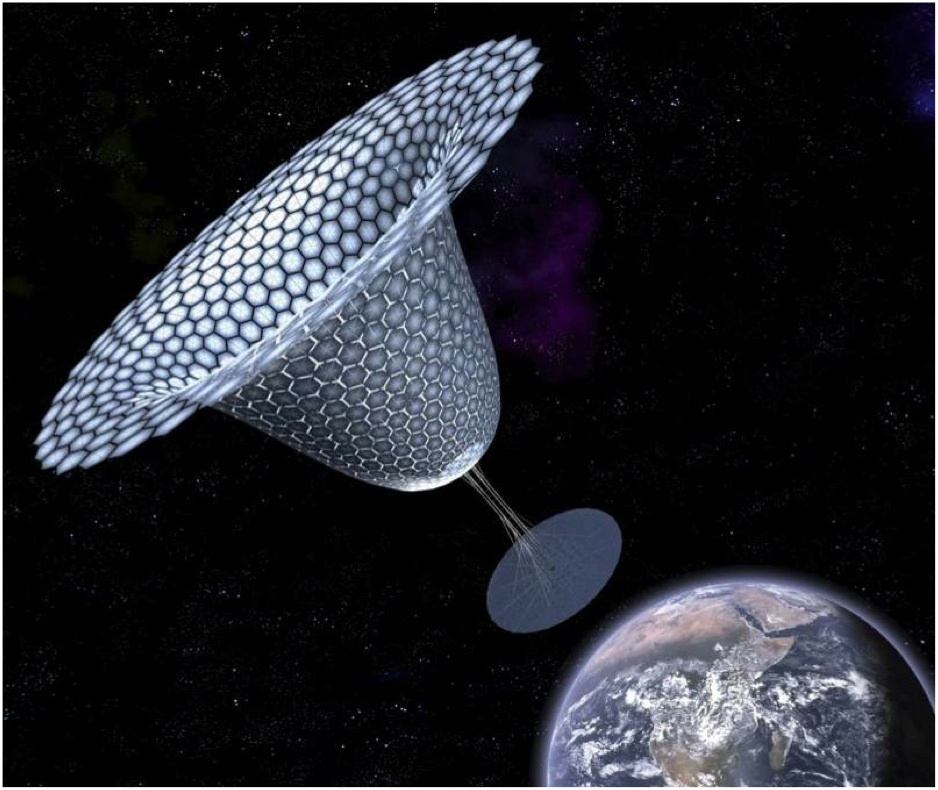Proposed satellite would beam solar power to earth
April 9, 2012 | Source: Space.com

Space-based energy factory, SPS-ALPHA --- the Solar Power Satellite via Arbitrarily Large PHased Array (credit: John Mankins)
A NASA-funded new approach to power-beaming solar-power satellites has been developed by John Mankins, who led the first NASA solar-power-satellite development team in the 90s.
Called the SPS-ALPHA (Solar Power Satellite via Arbitrarily Large PHased Array), this “first practical solar-power satellite concept” uses a novel “biomimetic” approach.
Mankins said that this project would make possible the construction of huge platforms from tens of thousands of small elements that can deliver remotely and affordably tens to thousands of megawatts using wireless power transmission to markets on Earth, as well as missions in space.
SPS-ALPHA uses a large array of individually controlled thin-film mirrors, outfitted on the curved surface of the satellite. These movable mirrors intercept and redirect incoming sunlight toward photovoltaic cells affixed to the backside of the solar power satellite’s large array.
The Earth-pointing side of this large modular circular array is tiled with a collection of microwave-power transmission panels that generate the coherent, low-intensity beam of radio frequency energy and transmits that energy to Earth.
Moreover, the SPS-ALPHA concept, Mankins said, enables a solar-power satellite that can be assembled entirely from individual system elements that weigh no more than 110 to 440 pounds (50 to 200 kilograms), allowing all pieces to be mass produced at dramatically lower cost than traditional space systems.